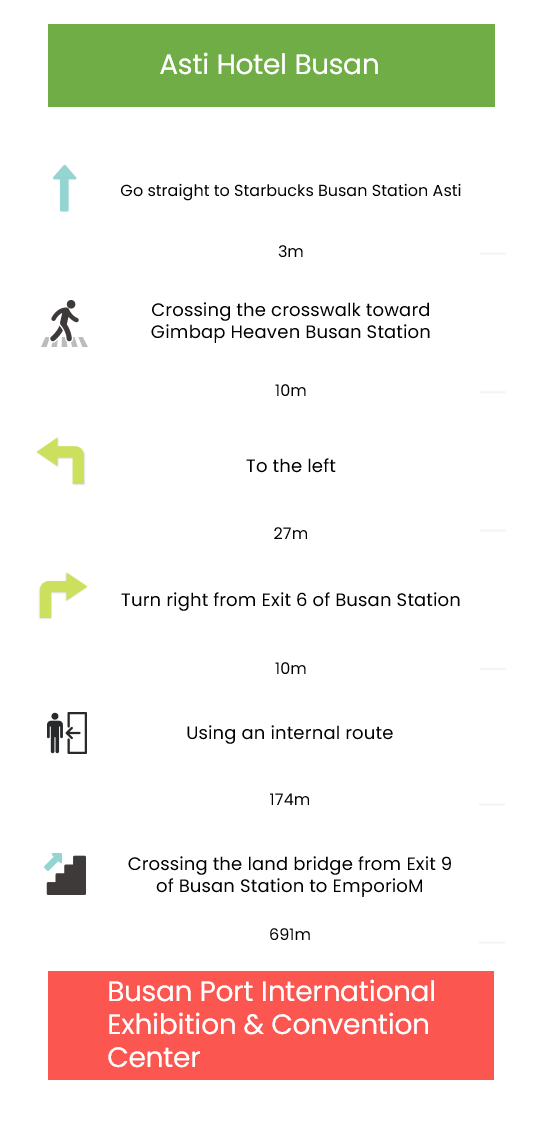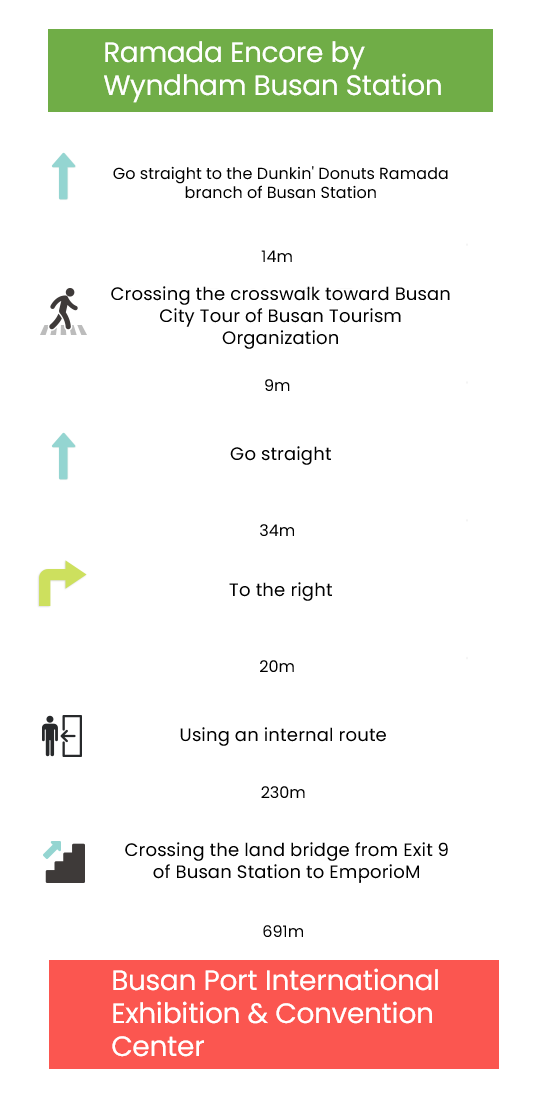General Information


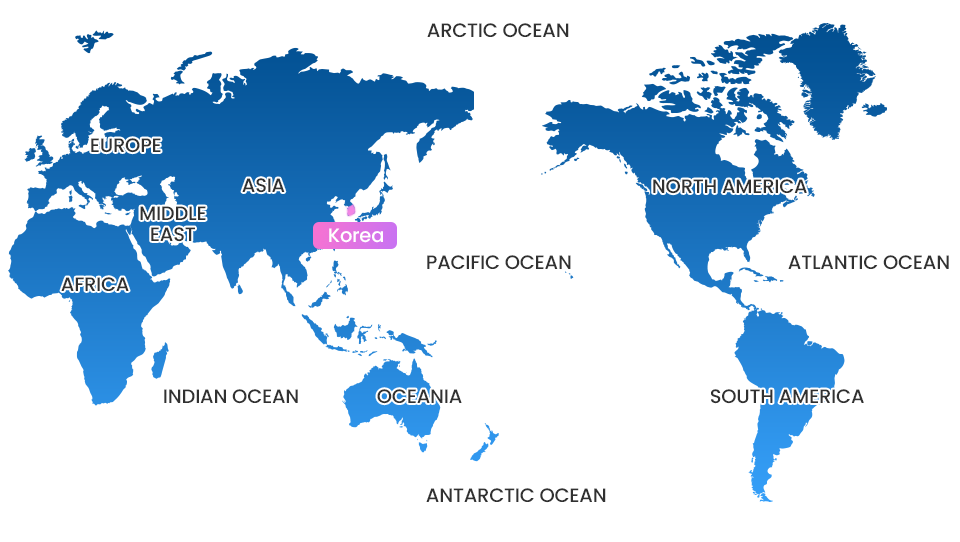
Located at the center of Northeast Asia, the Korean Peninsula neighbors China, Russia, and Japan. Under the World Geodetic System, it lies between 33 and 43 degrees north latitude and 124 and 132 degrees east longitude. The Peninsula (including both North and South Koreas) is 1,000 km long and 300 km wide on average, and its total land area is 222,000 km2. The total land area of South Korea (below the Military Demarcation Line) is around 100,364 km2.
Around 3/4 of the area is covered with mountains. You can find mountains almost anywhere in the country, but there are a few places you can view flat horizons. Topologically, Korea is higher in the east and lower in the west. Tall mountains with altitudes exceeding 1,000 m are concentrated in the north and the east, forming the topological backbone of the country. The mountainsides are steeper toward the east coast, and less severe toward the west coast.
Korea is surrounded by the sea on three sides, except for the northern side. The total extension of the coastlines is 17,000 km (including islands). The East Sea is characterized by its deep waters and simpler coastlines, whereas the West and South Seas are shallower, with complicated coastlines and more islands. Each of the three seas offers distinctive features and a wide array of oceanic atmospheres: the East Sea with its clean and deep water; the West Sea with its mud flats thriving with life; and the South Sea with its numerous islands (which earned the sea its nickname: Dadohae, or the sea of many islands).
Korea has a mild climate with four distinctive seasons. The migratory anticyclones make for sunny and dry spring and autumn, whereas the country’s summer is heavily affected by the hot and humid North Pacific anticyclone. During winter, the effect of the continental anticyclone from the north keeps the country dry and cold.
The average yearly temperature in Korea ranges between 7 and 15℃. The average monthly temperature reaches its peak in August between 19.7 and 26.7℃. However, the temperature can exceed 33℃ on certain days. The country is the coldest in January, with an average monthly temperature ranging between -6.9 and 3.6℃, and snow and ice can be found anywhere across the nation. In spring and autumn, the weather is mostly sunny and pleasant with the average daytime temperature between 15 and 18℃, making the seasons perfect for outdoor activities or travels.
The annual precipitation stands at around 1,300 mm, 54% of which is concentrated in summer. In most of the years, it continues to rain for weeks (between 30 and 35 days) in July and August. This period is called jangma in Korea. Significant humidity gaps exist between seasons, reaching as high as 78 to 79% in July and August and dropping to 59 to 60% in March and April.
In recent years, there have been signs that Korea is turning into a subtropical country; subtropical squalls can often be observed during summer, farmers can now grow tropical crops such as bananas and apple mangos, and the fields suitable for previous staple crops (rice, apples, etc.) are dwindling.
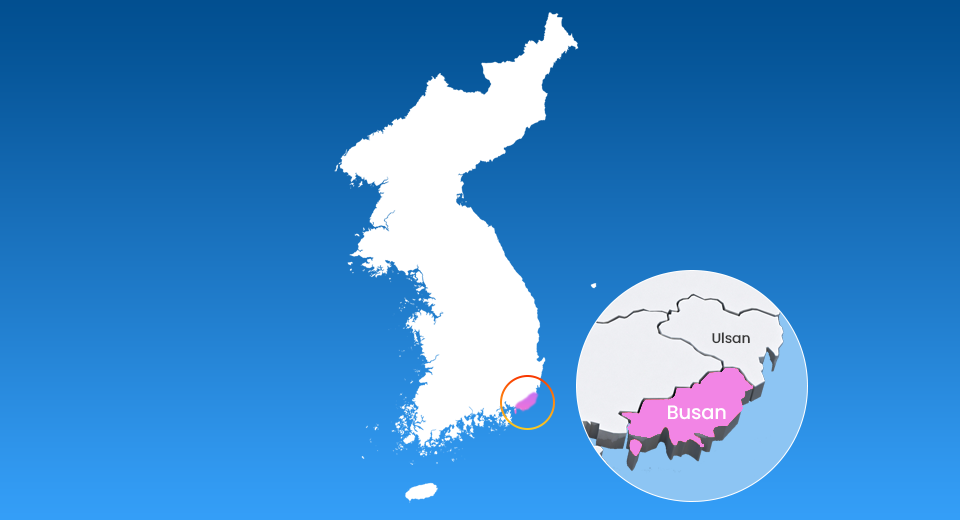
a bustling city of approximately 3.3 million residents, is located on the southeastern tip of the Korean peninsula. The size of Busan is 769.89km² which is only 0.8% of the whole landmass of the Korean Peninsula. The natural environment of Busan is a harmonious relationship of mountains, rivers and sea. Its geography includes a coastline featuring superb beaches and scenic cliffs and mountains which provide excellent hiking and extraordinary views with hot springs scattered throughout the city. Busan enjoys four distinct seasons and a temperate climate that never gets too hot or too cold.
Busan is the second largest city and the first international port city in Korea. Its deep harbor and gentle tides have allowed it to grow into the largest container handling port in the country and the fifth largest in the world, handling more than 80% of Korea's container traffic. In addition, it is located at the end of the Eurasian continent and serves as the main gateway to the Korean Peninsula and Northeast Asia as a whole.
The city's natural endowments and rich history have resulted in Busan's increasing reputation as a world-class city for tourism and culture, as well as also becoming renowned as a hot spot destination for international conventions. With the completion of the Busan Exhibition and Convention Center (BEXCO) On May 2001, Busan marked the beginning of its journey as an international conference city. Since then, it has successfully hosted various events, including the Special ASEAN-Republic of Korea Commemorative Summit in December 2014, the Annual Meeting of the African Development Bank (AfDB) in April 2018, the Busan World Magic Championship in July 2018, the Special ASEAN-Republic of Korea Commemorative Summit and the 1st ASEAN-Mekong Summit in November 2019, and the International Diabetes Federation Congress in December 2019. These successful events have solidified Busan's image and brand as an international conference city, establishing it as a key city in Northeast Asia for the 21st century, going beyond its role within Korea.
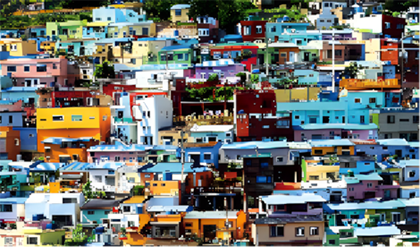
This village started in the 1950s as a difficult place to live for refugees of 6.25 War. Now completely transformed thanks to "Art Factory" public projects, the once deserted houses and alleys around this area have been reborn as cultural arts spaces such as a town history gallery, book cafe, and so on.
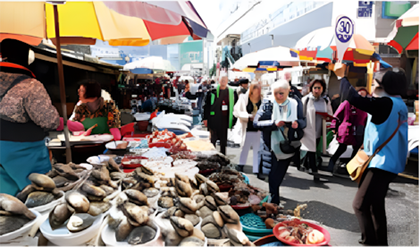
Jagalchi is full of the warmth of character unique to Busan. The largest fish market in the Southeast region, Jagalchi Market sells a full range of marine products including fresh catches of fish and good quality dried fish at reasonable prices.
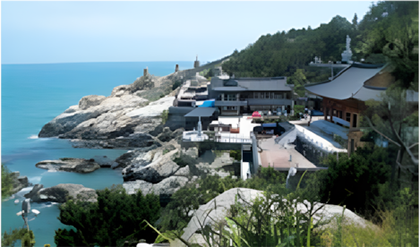
The Yonggung temple is situated near the sea unlike other temples located in mountains, therefore it's quite reasonable to call this temple an aquatic Buddhist sanctum.
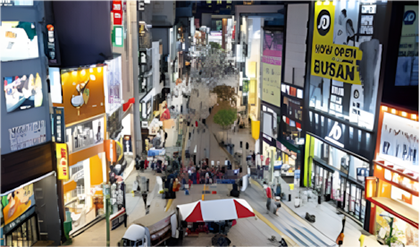
The busiest part of Busan. There are cafes, bars, and cheap and delicious restaurants, and young people are always on their way. In addition, there are many entertainment facilities such as nightclubs, arcades, and theaters where you can enjoy your leisure time.
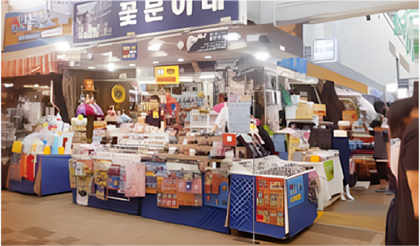
The market was formed in 1945 when the Japanese withdrew from the country and used their place in the international market to earn money by selling war supplies.
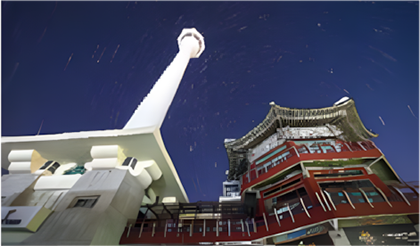
The tower, constructed in 1973, is Korea's first observatory. It is a tower that represents Busan and is located inside Yongdusan Park.
